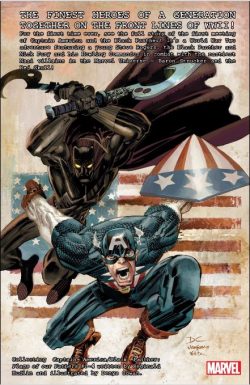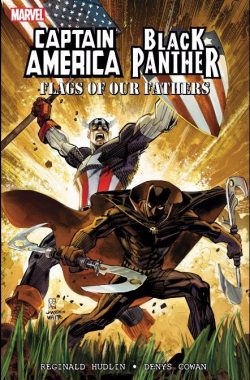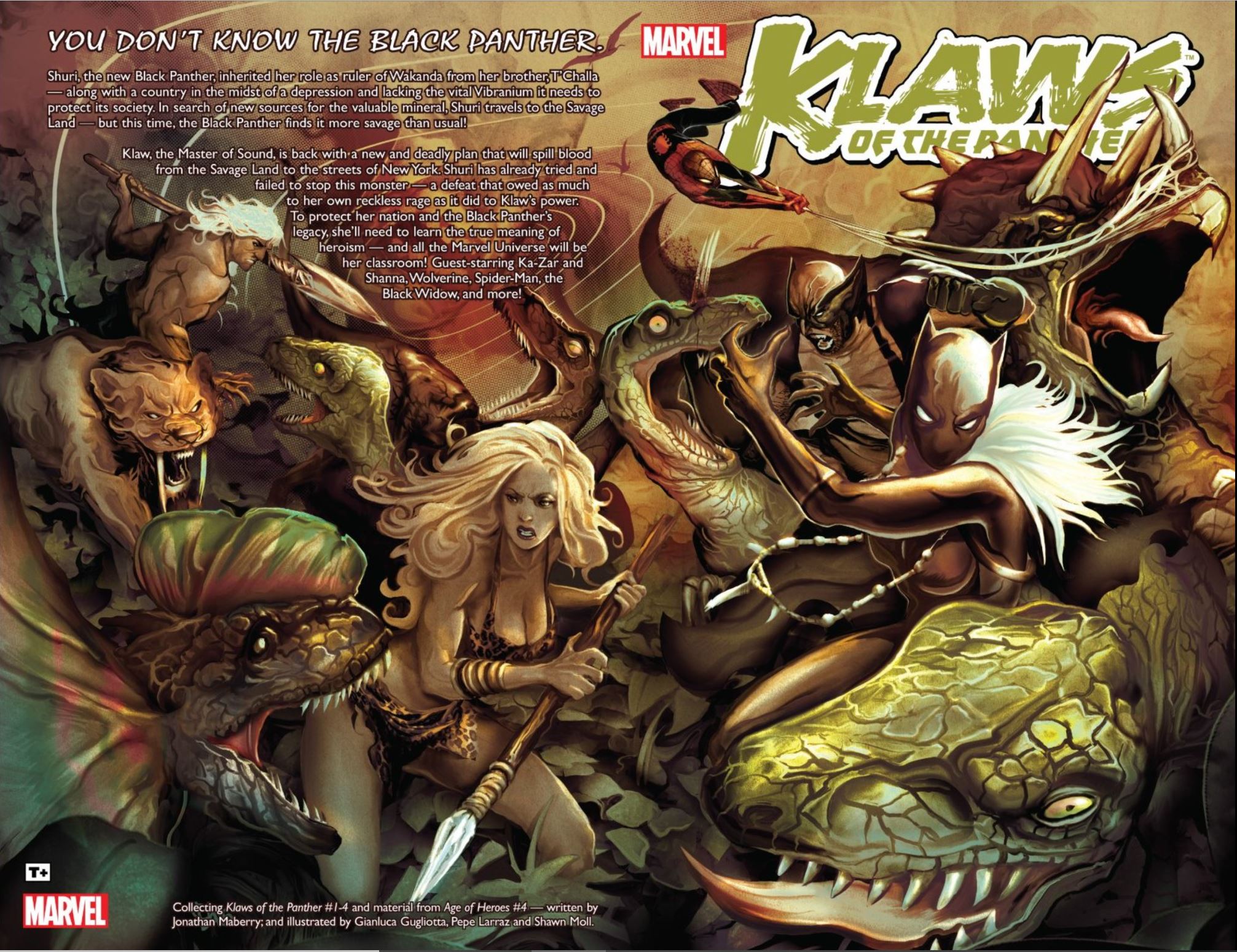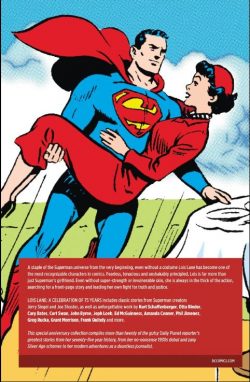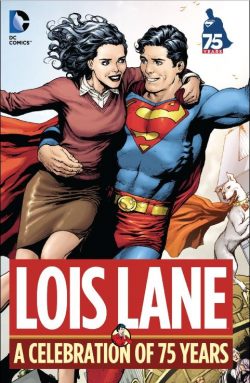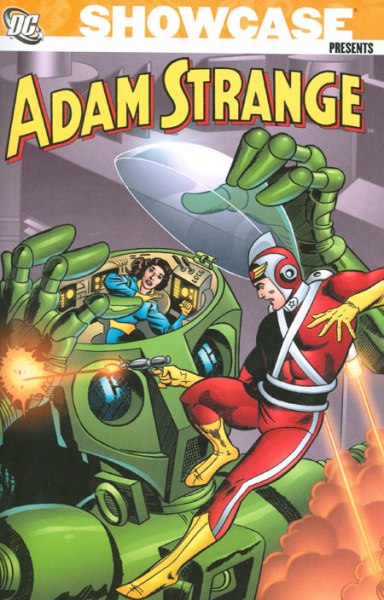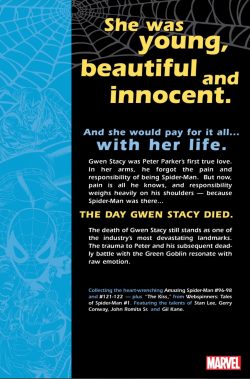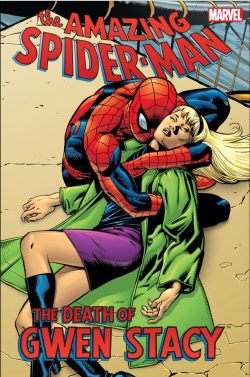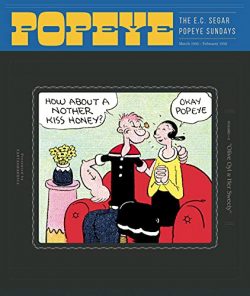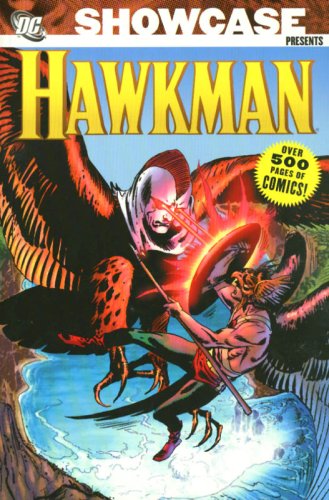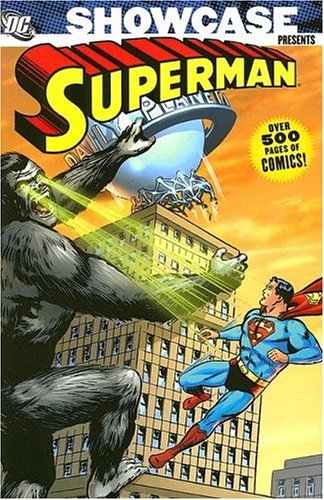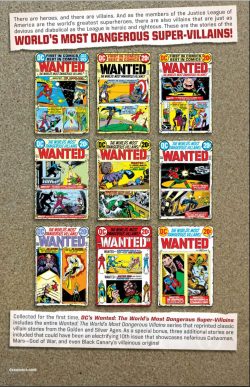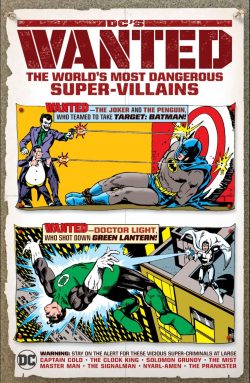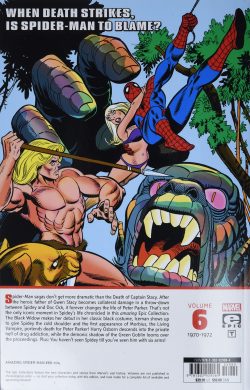
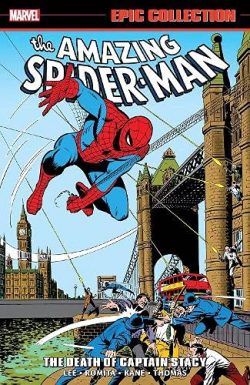
By Stan Lee, Roy Thomas, Gil Kane, John Romita, John Buscema & various (Marvel)
ISBN: 978-1302929084 (TPB/Digital edition)
The Amazing Spider-Man was first seen in the middle of 1962, so expect more wallcrawling reviews over the coming months, and if any of us make it to the end I’m sure we’ll all be well-versed in Arachnid Lore with our book shelves (physical or digital) positively groaning with sublimely re-readable tales and tomes…
As an added bonus, this collection also represents the debut of a current Marvel Movie-verse monster masterwork. Oooh, scary…
The Amazing Spider-Man was always a comic that matured with – or perhaps just slightly ahead of – its fan-base. In this superbly scintillating compilation of chronologically corrected webspinning wonderment (in ponderous paperback or ephemeral eBook formats), the World’s Most Misunderstood Hero barely survives another rocky period of transformation as the second great era of Amazing Arachnid artists moved inevitably to a close. Although the elder John Romita would remain closely connected to the Wallcrawler’s adventures for some time yet, these tales would number amongst his last sustained run as lead illustrator.
After a rather nervous nativity The Amazing Spider-Man soon became a certified sensation with kids of all ages. Before too long the quirky, charming, thrillingly action-packed comics soap-opera would become the model for an entire generation of younger heroes impatiently elbowing aside the staid, (relatively) old thirty-something mystery-men of previous publications and hallowed tradition.
Smart-but-alienated Peter Parker was bitten by a radioactive spider during a school trip. Discovering strange superhuman abilities – which he augmented with his own natural chemistry, physics and engineering genius – the kid did what any lonely, geeky nerd would do with such newfound prowess: he tried to cash in for girls, fame and money.
Making a costume to hide his identity in case he made a fool of himself, Parker became a minor media celebrity – and a criminally self-important one. To his eternal regret, when a thief fled past him one night, he didn’t lift a finger to stop him. That self-serving arrogance cost him dearly, as when he returned home, he learned his guardian uncle Ben Parker had been murdered.
Crazed and vengeful, Peter hunted the assailant who’d made his beloved Aunt May a widow and killed the only father he had ever known, discovering to his horror that it was the self-same felon he had neglected to stop. His irresponsibility had resulted in the death of the man who raised him, and the traumatised boy swore to forevermore use his powers to help others…
Since that night, the wondrous wallcrawler tirelessly battled miscreants, misanthropes, monsters and madmen, with a fickle, ungrateful public usually baying for his blood even as he perpetually saves them…
Stan Lee’s scripts were in tune with the times – as understood by most kids’ parents at least – and the heavy dose of soap opera kept older readers glued to the series even if the bombastic battle sequences didn’t.
This sixth full-colour collection of chronologically congregated and curated early Amazing Arachnoid Epics sees the World’s Most Misunderstood Hero foreshadowing a major change in the tone and timbre of comics even while continuing the long climb to global stardom…
Re-presenting Amazing Spider-Man #86-104 (originally released between July 1970 and January 1972) these spider-sagas began the next stage in the hero’s evolution as Lee first surrendered the scripting privileges: here to his ordained understudy Roy Thomas. Lee would reclaim the role briefly but as with The Fantastic Four and Thor, it was time for new voices…
The drama begins with drastic transformation for a conflicted Cold War leftover as Lee’s ‘Beware… the Black Widow!’ gave John Romita (senior) and Jim Mooney leave to redesign and relaunch the Soviet super-spy. Looking for a fresh start, the sometime-Avenger stole the show in an enjoyable if highly formulaic misunderstanding/clash-of-heroes yarn with an ailing Spider-Man never really endangered. The entire episode was actually a promotion for the Widow’s own soon-to-debut solo series…
‘Unmasked at Last!’ found Parker convinced that his powers were fading forever and suffering from a raging fever. Delirious, Parker exposes his secret identity to all the guests at his girlfriend’s party but on recovering – from flu – acts to save his other life, using the kind of logic and subterfuge that only works in comics and sitcoms. Asking ex-villain Hobie (The Prowler) Brown for help, Parker subsequently convinces everybody that it was only a flu-induced aberration…
Spider-Man at this time became a permanent, unmissable part of youngsters’ lives and did so by living a life as close to theirs as social mores and the Comics Code would allow. Blending cultural authenticity with spectacular art, and making a dramatic virtue of the awkwardness, confusion and sense of powerlessness that most of the readership daily experienced, resulted in an irresistibly intoxicating read, delivered in addictive emotionally-intense instalments, but none of that would be relevant if the stories weren’t so compellingly entertaining.
The wonderment resumes in ‘The Arms of Doctor Octopus!’ with the many-tentacled terror escaping jail and capturing a jetliner full of Chinese diplomats. It all ends with explosive suddenness and apparent suicide after the wallcrawler intervenes, yet is promptly followed a month later by ‘Doc Ock Lives!’ This heralded a new era of visual dynamism as Gil Kane began a sporadic but memorable run as penciller, with Romita reverting to chief inker. Here Octopus rampages through town, causing carnage until Spider-Man again confronts him. The battle takes a lethal turn in ‘And Death Shall Come!’ wherein Parker’s attempts to stop him leads to the death of a beloved cast member…
With that tragic demise of a cast regular, the webslinger became a wanted fugitive. Already fanatical publisher J. Jonah Jameson began backing “Law and Order†election hopeful Sam Bullitt in a campaign ‘To Smash the Spider!’, unaware of the politician’s disreputable past and ultra-right-wing agenda, but the secret is exposed (by Bugle sub-editor Joe Robertson) in #92’s ‘When Iceman Attacks’…
The ambitious demagogue convinced the youngest X-Man that Spider-Man had kidnapped Parker’s paramour Gwen Stacy but the Wondrous Wallcrawler’s explosive battle against the mutant exposed the corrupt and explicitly racist Bullit in an all-out action extravaganza featuring some of the best fight-art of the decade by two of the industry’s greatest names.
Romita resumed pencilling with issue #93, which saw the return of an almost forgotten frenemy in ‘The Lady and… The Prowler!’. Hobie Brown was a reformed super-burglar but when he saw that the Amazing Arachnid was wanted, he too was all too ready to believe the media hype…
Amazing Spider-Man #94 (Lee, Romita & Sal Buscema) offered a fresh glimpse of the hero’s fabled origin as part of a dynamic dust-up with The Beetle ‘On Wings of Death!’, after which Peter headed for London to woo his estranged girlfriend Gwen, who had fled the manic violence of America after her father’s death.
Typically, ‘Trap for a Terrorist’ finds the city under threat from a gang of bombers, which apparently only Spider-Man can handle. Gwen returned home, never knowing Parker had come after her, and had to stay out of sight once the wallcrawler was seen in Westminster.
Everything was forgotten in the next issue when deeply disturbed and partially amnesiac industrialist Norman Osborn abruptly remembered he once had another more macabre persona. Restored and enraged he once again attacked Peter in #96’s ‘…And Now, the Goblin!’ by Lee, Kane & Romita.
Stan Lee had long wanted to address the contemporary drugs situation in Marvel’s stories but was forbidden by Comics Code Authority strictures. When the Nixon administration, in the form of the US Department of Health, Education and Welfare, approached him to tackle the issue, Lee devised the 3-part Green Goblin tale. When it was inevitably refused Code approval, the writer-editor went ahead and published it anyway…
Although the return of the madman who knew all Spider-Man’s secrets was the big fan-draw, the real meat of the tale was how Osborn’s son Harry – a perfectly average rich white kid and Peter Parker’s best friend – is drawn into a web of addiction, abuse and toxic overdose. Frank Giacoia began inking Kane with the second instalment, ‘In the Grip of the Goblin!’ as the elder Osborn runs riot, almost killing the webslinger and preparing for his final deadly assault, even as his son lies dying. The saga spectacularly concludes with ‘The Goblin’s Last Gasp!’ as, in the clinch, the villain’s deeply-buried paternal love proves his undoing and Parker’s salvation…
Amazing Spider-Man #99 portrays ‘A Day in the Life of…’: an all-action, social drama-tinged palate-cleanser with Peter and Gwen finally getting their love-life back on track, only marginally diverted by a prison breakout easily quelled by the Arachnid Avenger, whilst highlighting the growing scandal of prison conditions.
Celebrating a major anniversary, and heralding a dramatic change to the entire comics industry, an astonishing tales begins with ‘The Spider or the Man?’ (Lee, Kane & Giacoia) as, determined to retire and marry, Peter attempts to destroy his powers with an untested self-concocted serum. The result is a hallucinogenic trip wherein action ace Kane draws an all-out battle between Spidey and an army of old enemies, culminating in a waking nightmare when Parker regains consciousness and discovers he’s grown four additional arms…
With #101 Roy Thomas stepped in as scripter for ‘A Monster Called… Morbius!’, wherein the eight-limbed hero desperately seeks some way to reverse his condition. Fortuitously, he stumbles across a murderous costumed horror who drinks human blood. Making matters even worse is old foe The Lizard who suddenly turns up, determined to kill them both…
Amongst the many things banned by the Comics Code in 1954 were horror staples vampires and werewolves, but changing tastes and rising comics production costs of the early 1970s saw superhero titles dropping like flies in a blizzard. With interest in suspense and the supernatural growing, all comics publishers were pushing to re-establish horror comics again, and the covert introduction of a “Living Vampire†in superhero staple Spider-Man led to another challenge to the CCA; the eventually revision of the horror section of the Code and a resurgent rise of supernatural heroes and titles.
For one month Marvel also experimented with double-sized comicbooks (DC’s switch to 52-page issues lasted almost a year – August 1971-June 1972 cover-dates) and Amazing Spider-Man #102 featured an immense, 3-chapter blockbuster beginning with ‘Vampire at Large!’, wherein the octo-webspinner and anthropoid reptile join forces to hunt a science-spawned bloodsucker after discovering a factor in the vampire’s saliva could cure both part-time monsters’ respective conditions…
‘The Way it Began’ briefly diverges from the main narrative to present the tragic secret origin of Nobel Prize winning biologist Michael Morbius, and how be turned himself into a haunted night-horror, before kThe Curse and the Cure!’ brings the tale to a blistering conclusion and restores the status quo and requisite appendage-count.
Designed as another extra-length epic, ‘Walk the Savage Land!’ began in now conventionally paginated #103, but was sliced in half and finished as #104’s ‘The Beauty and the Brute’.
When The Daily Bugle suffers a financial crisis, bellicose publisher Jameson takes Parker and his extremely photogenic girlfriend Gwen on a monster-hunt to the Lost World under the Antarctic. The intention is to encounter dinosaurs and cavemen but the stunt goes awry, dragging in noble savage Ka-Zar, perfidious villain Kraven the Hunter and a terrifying giant alien baby dubbed Gog in a fabulous pastiche and homage to Willis O’Brien’s King Kong, delivered with love and pride from Thomas, Kane & Giacoia.
Although this romp ends the narrative on a rousing high, there still more to see, beginning with the Romita Sr. covers from all-reprint Amazing Spider-Man Annual‘s #7-8; contemporary house-ads and scads of un-inked Kane art pages. That’s supplemented by a bridging story-page by Kane & Mike Esposito from Marvel Tales #83; and a selection of covers from numerous other reprints of these stories: illustrated by Jim Calafiore, Glen Orbik, Steve Lightle, Nghia Lam & Jason Rodriguez, Al Rio & Thomas Velazquez, Romita Sr. Bruce Timm, Mike Wieringo, Tim Townsend, Sean Chen & Eric Cannon, but the true treat for comics historians are various versions of Kane’s original cover for #97 and the turning point of the drugs story. A far stronger and more explicit view of Harry’s addiction, both the colour rough and amended full cover art were rejected by the CCA.
Spider-Man became a permanent unmissable part of many teenagers’ lives at this time and did so by living a life as close to theirs as social mores and the Comics Code would allow. Blending cultural authenticity with glorious narrative art, and making a dramatic virtue of the awkwardness, confusion and sense of powerlessness most of the readership experienced daily, resulted in an irresistibly intoxicating read, delivered in addictive soap-opera slices, but none of that would be relevant if the stories weren’t so compellingly entertaining.
This book is Marvel and Spider-Man at their peak. Come see why.
© 2021 MARVEL

